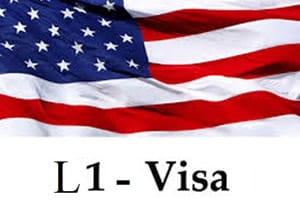
The L-1 visa is a great option for companies that want to transfer employees in managerial, executive or specialized knowledge roles from a foreign company abroad to a US company with which it has a qualifying relationship. For most applicants, the process involves gathering all supporting documents and submitting them to U.S. Citizenship & Immigration Services (“USCIS”) along with Form I-129. If the applicant is outside the U.S., then after USCIS approves the petition, the applicant will make an appointment at a U.S. Consulate abroad to obtain the L-1 visa stamp. If the applicant is already in the U.S. (for example on B-1 status), then the applicant may choose to do a change of status from B-1 to L-1 status. Once the applicant leaves the U.S. they will need to go to a U.S. Consulate and get the L-1 visa stamp in their passport to allow them to re-enter the U.S.
Do Canadians have to apply for the initial L-1 through USCIS? Can they apply at a port of entry?
The process for Canadians who are getting L-1 visas is somewhat different. Canadians are visa exempt, which means that typically they do not need visas to enter the U.S. (although there are some notable exceptions, for example, the E-2 visa). For the L-1 category, being visa exempt means that Canadian applicants do not need to first submit an application through USCIS. Canadians can prepare their L-1 application with their employer and then take all the documents to a port of entry and have a U.S. Customs and Border Protection (“CBP”) officer make a decision on the application at the border. If the officer approves the application, the passport will be stamped and the person will enter the U.S. in L-1 status. Canadians can go to any port of entry and present their L-1 application, however CBP has designated certain ports of entry for optimized processing. Ports of entry with optimized processing have more efficient procedures for processing TNs and L-1s, so CBP recommends that applicants apply at one of these ports if possible.
Can Canadians renew their L-1 at the border? Do they have to apply through USCIS?
In the past, Canadians were able to renew their L-1 visas at the border. Starting in 2019, this practice began to change and CBP began refusing to process L-1 renewal applications at the border. This means that at the current time, Canadian L-1 applicants who are seeking to renew their L-1 should have their employer file an extension application with USCIS. If they try to renew the L-1 at the border, they are likely to be refused. This new policy only applies to L-1 renewals and L-2 dependents who are trying to renew along with the principal applicant. L-1 applicants going for an initial application or L-1 applications for commuter/intermittent L-1 applications (meaning applicants who live in Canada and spend less than 6 months in the U.S. each year), should still be able to have their applications adjudicated at the border.